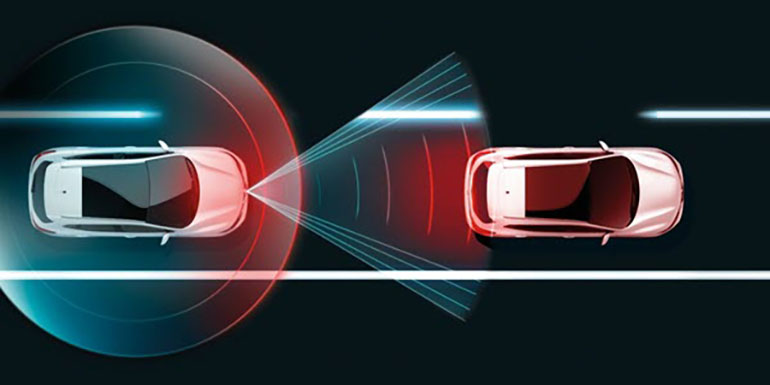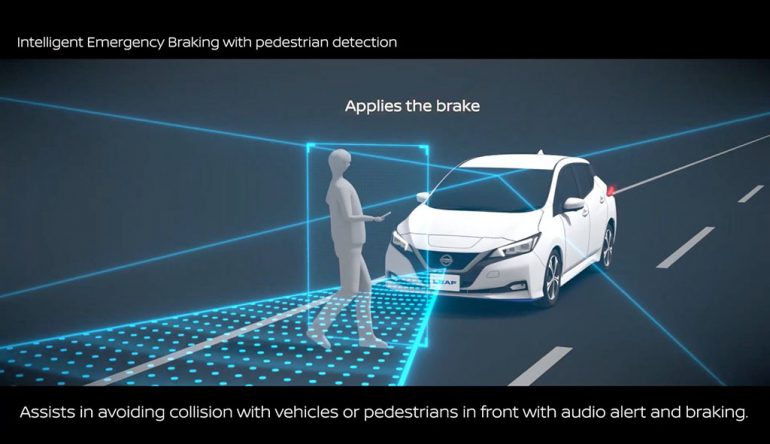
The U.S. Department of Transportation’s National Highway Traffic Safety Administration (NHTSA) has recently introduced a Notice of Proposed Rulemaking aimed at enhancing road safety by mandating the inclusion of automatic emergency braking (AEB) systems in passenger cars and light trucks. The proposed rule intends to significantly reduce pedestrian-related accidents and rear-end crashes, both of which contribute to a considerable number of injuries and fatalities.
According to NHTSA’s projections, if the proposed rule is finalized, it could save a minimum of 360 lives annually and prevent around 24,000 injuries each year. Moreover, the implementation of AEB systems would lead to substantial reductions in property damage resulting from rear-end collisions. While many accidents would be entirely avoided, those that do occur would be less severe and destructive.
U.S. Transportation Secretary Pete Buttigieg emphasized the importance of this proposed rule in safeguarding lives and improving road safety for all Americans. Drawing parallels to the life-saving impact of innovations like seat belts and airbags, he asserted that requiring automatic emergency braking in vehicles would contribute to enhanced safety on the nation’s roads.
The proposed rule serves as a crucial component of the Department’s National Roadway Safety Strategy (NRSS), which was launched in January 2022 to address the pressing issue of traffic fatalities and serious injuries. The NRSS adopts a comprehensive approach known as the safe system, incorporating multiple layers of protection such as safer roads, safer people, safer vehicles, safer speeds, and improved post-crash care. This rule aligns with the safe system approach, highlighting the significance of safer vehicles and the U.S. Department of Transportation’s efforts to expand vehicle systems and features that proactively prevent crashes.
To further support the NRSS, President Biden’s Bipartisan Infrastructure Law includes unprecedented safety funding. In February, the Department announced grants totaling over $800 million to assist communities in undertaking projects aimed at addressing high-crash areas. The NRSS also encompasses the Call to Action campaign and a one-year progress report, accompanied by data visualizations, to underscore the magnitude and extent of the roadway safety problem in the United States.

In addition to the proposed rule on AEB systems, the Department has taken several other measures to improve roadway safety. These actions include producing the Vulnerable Road User Safety Assessment to guide states in conducting required assessments in 2023, issuing the Complete Streets Report to Congress titled “Moving to a Complete Streets Design Model,” finalizing a rule on rear impact guards, advancing the Manual on Uniform Traffic Control Devices rulemaking effort, publishing an Advance Supplemental Notice of Proposed Rulemaking regarding speed limiters, making significant progress in pedestrian automatic emergency braking rulemaking, and issuing a Standing General Order to collect more data on crashes involving automated driving systems and advanced driver assistance systems.
Automatic emergency braking systems employ various sensor technologies and subsystems that work in tandem to detect imminent collisions. When a vehicle is on the verge of crashing, the AEB system automatically engages the brakes if the driver has not done so, or it amplifies the braking force to assist the driver in avoiding or reducing the severity of the crash.
NHTSA Chief Counsel Ann Carlson emphasized the benefits of AEB systems, stating that they have already demonstrated their efficacy in certain passenger vehicles, even at lower speeds. The proposed rule seeks to expand the use of this technology to save more lives. The rule would require all vehicles to be capable of stopping and avoiding contact with the vehicle in front of them at speeds up to 62 miles per hour. Additionally, it would mandate pedestrian AEB, including the recognition and avoidance of pedestrians at night. Carlson described this proposed rule as a significant advancement in safety.
If the proposed rule is adopted as planned, nearly all light vehicles in the United States with a gross vehicle weight rating of 10,000 pounds or less will be required to incorporate AEB technology within three years of the final rule’s publication.
This Notice of Proposed Rulemaking is a direct response to a provision in the Bipartisan Infrastructure Law, which calls for the establishment of minimum performance standards necessitating the inclusion of AEB systems in all passenger vehicles manufactured for sale in the United States. Alongside the Notice of Proposed Rulemaking, a Preliminary Regulatory Impact Analysis has been provided, presenting the benefits and costs associated with the proposed rule.